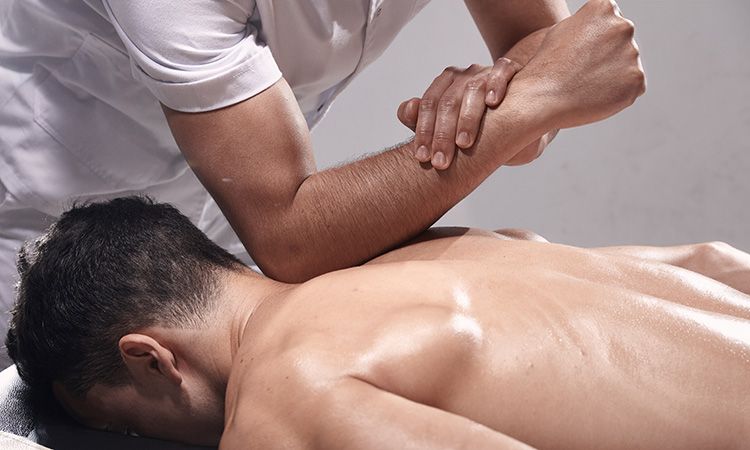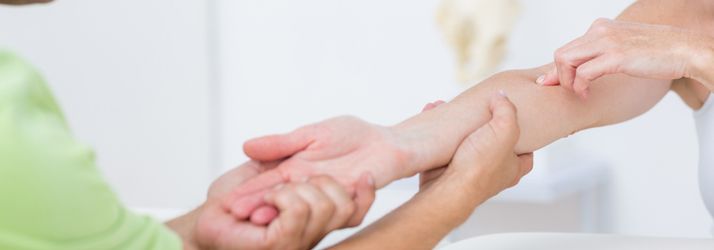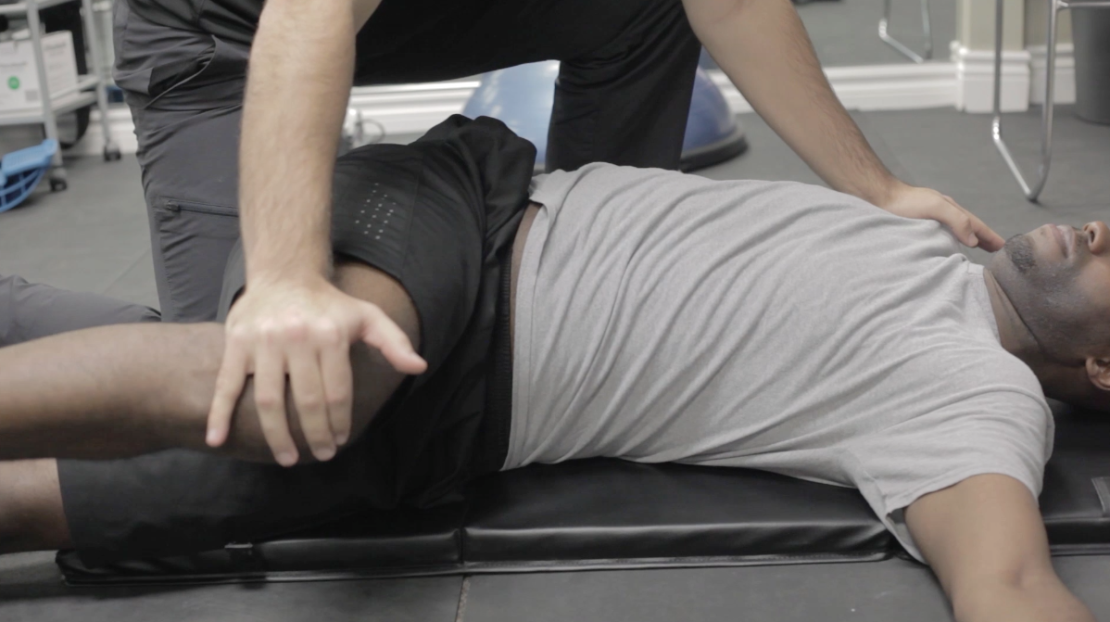Services
- » GENERAL EXPLANATION OF TECHNIQUES
- » MOVEMENT THERAPY
- » DEEP TISSUE
- » TRIGGER POINT RELEASE
- » ACTIVE RELEASE TECHNIQUE (ART)
- » MYOFASCIAL RELEASE
- » ACTIVE ISOLATED STRETCHING
- » SPORTS MASSAGE
- » ABDOMINAL MASSAGE
- » CUPPING THERAPY
- » GRASTON SCRAPING (GUA SHA)
GENERAL EXPLANATION OF TECHNIQUES
My Approach to Corrective Bodywork...
The methods and techniques described below represent the core of my practice and the areas in which I am most proficient. When you book an appointment, you are investing in my time, not in a specific modality. This approach allows me the flexibility to tailor each session based on your unique needs. Depending on the condition you’re seeking help with, I will determine the most effective combination of techniques to address the issue or find what your body responds to best.
My practice is built on an intuitive, results-driven approach that blends multiple modalities to achieve meaningful outcomes. The more we work together, the better I can refine and customize your treatment, discovering which methods yield the highest level of results for you as an individual.
Before each session, we will take the time to discuss your health and movement goals, as well as any specific aspects of your current concerns. This conversation is essential to understanding your needs and formulating a plan that addresses the root cause of the issue, not just the symptoms.
MOVEMENT THERAPY

Movement Therapy is a functional and educational approach to restoring and enhancing the body’s natural movement patterns. This process identifies areas of restriction, compensation, or weakness while teaching you to move with confidence, strength, and ease.
How Does Movement Therapy Complement Massage?
Movement Therapy bridges the gap between Massage Therapy and Exercise Prescription by combining manual therapy with tailored movement education. This approach addresses the root causes of pain, dysfunction, and movement limitations. While Massage Therapy is highly effective for relieving tension and aiding recovery, Movement Therapy goes further by targeting the patterns and habits contributing to dysfunction. By blending hands-on soft tissue work with active movement strategies, this service promotes long-term improvements in posture, mobility, and functional strength.
What to Expect...
During a Movement Therapy session, we will:
- Perform a detailed movement assessment to identify imbalances, restrictions, and areas of compensation.
- Develop a personalized plan that includes mobility exercises, strengthening techniques, and body awareness training—all designed to build balance, stability, and long-term physical resilience.
- Provide education on proper form, technique, and body mechanics to support sustainable progress.
This integrative service addresses both the physical and mental aspects of movement to empower you with the tools and knowledge to reduce strain, prevent injury, and optimize physical performance both during sessions and in daily life. Movement Therapy is ideal for those who want to move smarter, feel stronger, and achieve lasting improvements in their body’s function.

DEEP TISSUE

Deep tissue therapy isn’t a distinct type of massage but rather an adaptation of traditional techniques using greater force and precision. This approach focuses on addressing deeper layers of fascia, connective tissue, and musculature. It involves slow, deliberate strokes combined with sustained pressure and targeted release compressions to reach and alleviate specific fascial adhesions.
A key component of this method is Deep Transverse Friction, which helps stimulate a localized inflammatory response to encourage healing. By promoting increased blood flow and nutrient delivery to dense, dysfunctional tissue, this technique supports the body’s natural repair processes.
What to Expect...
Given the intensity of deep tissue work, open communication during the session is essential to ensure your comfort. While therapeutic discomfort can be part of the process, it should never cross into excessive pain. Post-session soreness is common and comparable to the feeling after an intense workout. Following proper recovery protocols—such as staying hydrated, stretching, and resting—will help optimize the benefits of your treatment.
TRIGGER POINT RELEASE

What Are Trigger Points?
Trigger points are hyperirritable spots within taut bands of dense muscle tissue that can cause localized and referred pain. These nodules commonly occur near the neuromuscular junction of a muscle belly and are sometimes associated with acupressure points or meridians in Eastern medicine.
Trigger points form when muscle cells fail to release the calcium molecules that initiate contractions, leading to sustained contractions as calcium channels remain open and acetylcholine continues to flood the junction. This prolonged overactivation shortens and weakens the affected muscle fibers, creating a localized environment of uncontrolled metabolic activity. Without proper blood and lymphatic flow, oxygen and nutrients are depleted, and waste products accumulate, causing an acidic and painful state. Over time, this sensitization can lead to structural changes and chronic dysfunction.
How Trigger Point Therapy Works...
This therapeutic approach aims to locate, stimulate, and release trigger points using techniques such as focused pressure, friction, vibration, and active release. The intensity of these methods is carefully adjusted based on the tissue's response, with the goal of persuading the trigger point to release rather than forcing it. Effective trigger point therapy not only alleviates pain but also restores healthy muscle activation patterns, improving coordination, balance, and posture.
A skilled therapist can:
- Palpate and identify trigger points.
- Trace referred pain patterns back to the source.
- Recognize the underlying factors that contributed to the trigger point’s formation.
What to Expect...
Similar to Deep Tissue work, this is a more intense method. It requires the client to be very mentally present and calm in order to receive the direct pressure and not tense up or fight back. While the process can sometimes be uncomfortable or even painful, the outcomes are often profound.
ACTIVE RELEASE TECHNIQUE (ART)

Active Release Technique is a specialized method that combines targeted pressure with client participation to restore proper movement patterns in soft tissues. Similar to trigger point therapy, the therapist applies deep tension to the belly of a shortened muscle or an area of tenderness. The client is then guided to actively move the affected area from a shortened to a lengthened position.
This approach involves placing precise contact near adhesions or areas of friction while the client performs movements that create a longitudinal sliding motion of soft tissues—such as nerves, ligaments, tendons, and muscles—beneath the therapist’s contact point. This dynamic interaction helps to break down adhesions, improve tissue mobility, and reestablish functional movement patterns.
How It Works...
ART aligns with the sliding filament theory of muscle contraction, emphasizing the need for hydrated collagen fibers and interstitial fluid within the surrounding fascia. While most bodywork techniques support these processes, ART’s focused and localized application amplifies these effects.
By incorporating active client involvement, ART not only addresses physical restrictions but also enhances neuromuscular firing patterns and strengthens the mind-body connection. This integration of movement and manual therapy results in a more effective release and improved tissue function.
MYOFASCIAL RELEASE

Myofascial release is a specialized technique aimed at stretching the body’s fascia network, creating space within it, and rehydrating areas that have become "dried" or restricted. Unlike traditional massage, this method employs dry contact to grip and stretch large areas of tissue for extended periods (up to 5–10 minutes) and utilizes sustained traction while guiding entire limbs through their full range of motion.
Understanding Fascia...
Fascia is the intricate web of connective tissue that envelops and interconnects all muscles, organs, and skeletal structures. This network serves to:
- Stabilize and support the body.
- Protect surrounding structures as a sheath.
- Provide pathways for tissues like lymph vessels and nerves.
Composed primarily of collagen, fascia exhibits thixotropic properties—becoming thick and viscous when static and more fluid and pliable under movement or shear stress. In practical terms, this means fascia is stiffer at rest and more elastic during motion, emphasizing the importance of proper lubrication and elasticity for optimal function.
ACTIVE ISOLATED STRETCHING

Active Isolated Stretching is a dynamic technique designed to improve flexibility and mobility by guiding you through a series of targeted stretches and poses. This method focuses on enhancing your body’s natural range of motion for each joint.
This approach involves active participation from the client through contract-relax techniques (commonly referred to as PNF stretching) or by incorporating PAILS and RAILS (Progressive and Regressive Angular Isometric Loading). These methods engage your muscles during stretching, promoting deeper releases, improved joint strength, and enhanced neuromuscular control.
By actively engaging in each stretch with my guidance, you’ll achieve a more effective level of movement while fostering better muscle coordination and relaxation.
SPORTS MASSAGE

Sports massage is specifically designed for athletes and active individuals to support their fitness goals, reduce the physical demands of their sport, and enhance both performance and recovery. This method targets the unique needs of athletic bodies, addressing the stresses and strains that result from intense physical activity.
Why Sports Massage Is Essential...
Athletic success often requires pushing the body to its limits, creating a necessary degree of stress to promote adaptation and improved performance. However, without proper recovery, this stress can lead to injuries—both short-term and long-term. Sports massage is rooted in the principles of injury prevention, pain reduction, enhanced flexibility and stability, and accelerated recovery rates, making it an integral part of maintaining peak performance and prolonging an athletic career.
Injury Management and Recovery...
For those recovering from injuries such as sprains, strains, or even post-operative conditions, sports massage plays a critical role in:
- Improving kinesthetic awareness.
- Increasing blood flow and nutrient delivery to affected tissues.
- Promoting the body’s natural immune response to accelerate healing.
Emerging research and clinical evidence suggest that the traditional recommendation of extended rest during recovery can hinder the healing process. Prolonged inactivity may impair neuromuscular function and delay a return to peak performance. By contrast, sports massage, often incorporated into rehabilitation protocols, helps maintain muscle function, flexibility, and strength during recovery, ensuring a smoother transition back to activity.
ABDOMINAL MASSAGE

Abdominal therapy focuses on the entire abdominal cavity, encompassing the muscles, fascia (including the diaphragm and psoas), and the underlying organs along with their visceral fascia. Although often overlooked by many manual therapists, I have found that addressing this region can be transformative, particularly for individuals experiencing poor posture, back pain, or hip discomfort.
Why Abdominal Therapy Matters...
The abdomen plays a critical role not only in musculoskeletal health but also in digestive function. While many people are unfamiliar with the connection between abdominal manipulation and pain relief, this approach can be incredibly beneficial in addressing chronic tension and discomfort. Though abdominal work may be perceived as uncomfortable due to its sensitive nature, the benefits far outweigh any initial hesitation.
In my practice, this technique focuses on releasing tightness in the diaphragm, psoas, and surrounding muscles, as well as facilitating better mobility in the viscera and improving the flow of energy throughout the body. It requires the client’s active participation, as full relaxation is necessary to receive the full benefit of this work.
Addressing Digestion and the Gut-Brain Axis...
Beyond musculoskeletal concerns, abdominal therapy also supports digestive health—a key yet often underappreciated function in bodywork. Conditions such as IBS, Crohn's disease, constipation, indigestion, and pelvic floor dysfunction can be significantly alleviated with focused abdominal manipulation. The strokes used in this technique follow the natural flow of the intestines in a clockwise pattern, stimulating the enteric nervous system (which includes the Vagus nerve) and promoting peristalsis (the wave-like muscle contractions that move food through the digestive tract).
Additionally, the digestive system is closely linked to the enteric nervous system, which is sometimes referred to as the "second brain." The majority of your serotonin is produced here, meaning that addressing this region not only benefits digestive health but can also contribute to stress reduction and overall emotional well-being.
CUPPING THERAPY

Cupping is a therapeutic technique that involves the use of specialized cups to create vacuum suction on the skin, offering a unique form of soft tissue manipulation. Unlike traditional massage, which typically compresses tissues, cupping works by decompressing the soft tissues, gently lifting the skin and underlying fascia. This creates space within the tissue, effectively stretching tight areas, and facilitates the movement of interstitial fluid, blood, and lymph, helping to address stagnation and promote healing.
How Cupping Works...
The cups can be strategically placed to target specific areas of tension, trigger points, or along meridian lines to promote balance within the body. In some cases, the cups are moved in a gliding motion across the skin, similar to traditional massage strokes, while providing a pulling sensation that can be felt during the treatment.
Therapeutic Benefits...
The primary benefits of cupping include the alleviation of muscle tightness, improved circulation, and enhanced fluid movement in areas that may have become stagnant or restricted. Cupping can also help reduce inflammation and promote relaxation by stretching the fascia and creating space within the tissues. After the cups are removed, it’s common to experience redness or a feeling of warmth in the treated area, with the possibility of circular marks or bruising that may last for several days.
Considerations...
Cupping therapy is generally well-tolerated, but it’s important to note that the marks left by the cups are a natural part of the process and reflect the therapeutic effects of the treatment. These marks typically fade within a few days, and the overall benefits of improved tissue mobility and fluid circulation often far outweigh any temporary discoloration.
Research...
The Medical Perspective of Cupping Therapy: Effects and Mechanisms of Action
Cupping Therapy: An Overview from a Modern Medicine Perspective
GRASTON SCRAPING (GUA SHA)

Graston Scraping, also known as Instrument-Assisted Soft Tissue Mobilization (IASTM), is a specialized technique that utilizes stainless steel tools to perform cross-friction massage on the skin. This method involves scraping or brushing the skin against the grain of the scar tissue, reintroducing controlled micro-trauma to the affected area. The goal is to break down scar tissue and release fascial restrictions, which stimulates the body's natural healing response.
How It Works...
The process of Graston Scraping creates a localized inflammatory response, which includes the cascade of white blood cells and specific hormones that promote tissue repair. This leads to an increase in blood flow and nutrient delivery to the injured area, facilitating the healing of soft tissues and scar tissue. By targeting fascial adhesions and muscular restrictions, the technique encourages the body to remodel the affected tissue, improving flexibility, mobility, and overall function.
Therapeutic Benefits...
Graston Scraping is particularly effective for individuals with chronic injuries that were not properly rehabilitated, as well as those dealing with fibrosis or other tissue restrictions. It is often used to address muscle stiffness, improve mobility, and accelerate recovery from repetitive strain or injury.
Considerations...
While the therapy can be highly beneficial, it may cause some discomfort, depending on the individual's pain threshold. It is not uncommon for patients to experience soreness, bruising, or small red dots (called petechiae) in the treated area. These marks are a normal part of the healing process and should subside in a few days. Despite any temporary discomfort, Graston Scraping’s long-term effects often result in improved tissue health, mobility, and function.